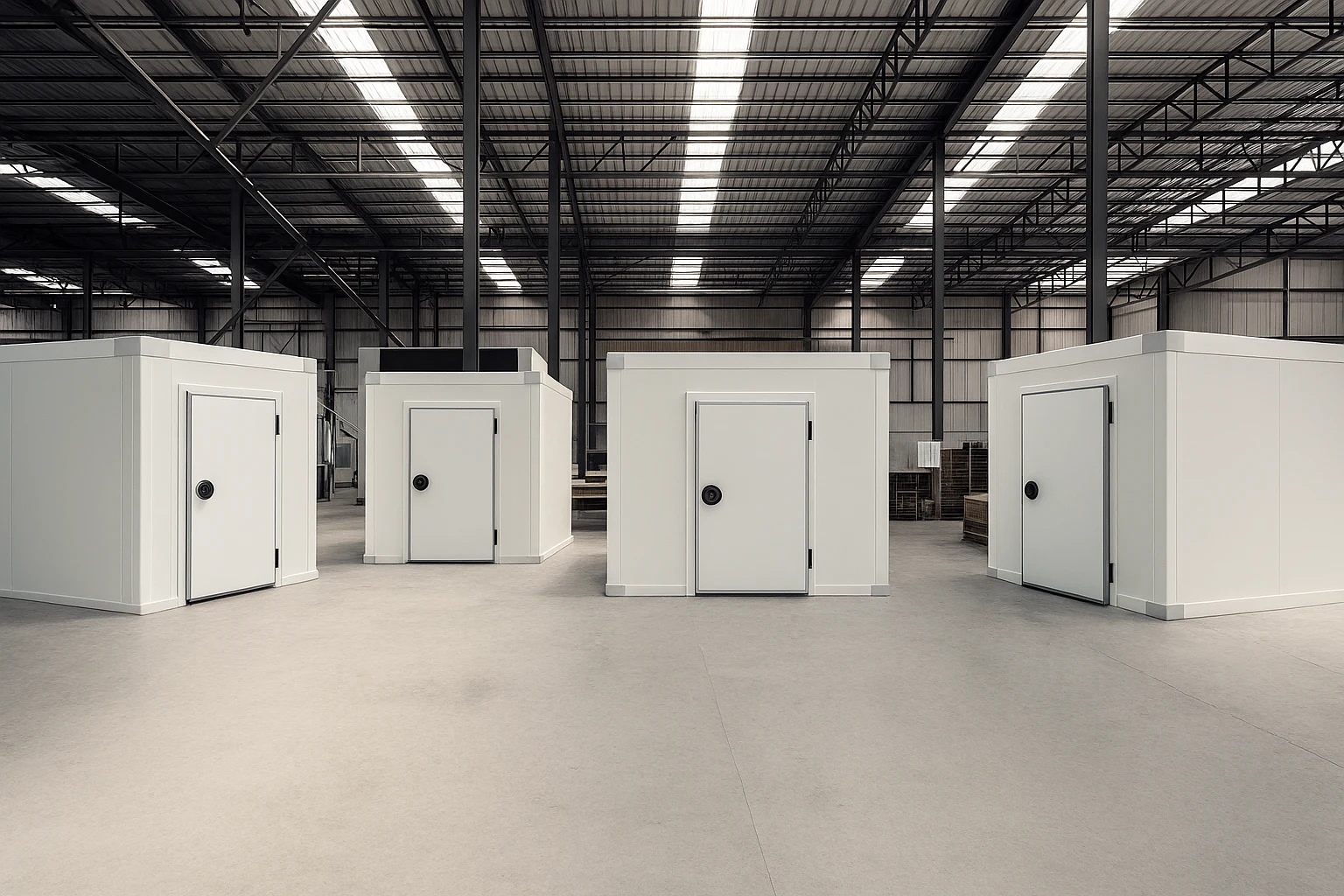Do EPS Panels Meet Australian Building Codes?
A comprehensive reference on using Expanded Polystyrene (EPS) insulated panels under the Australian National Construction Code (NCC/BCA)—including fire & combustibility, thermal & condensation, hygiene finishes, insurer expectations, performance vs DTS pathways, and documentation for certifier approval.

NCC/BCA Overview for EPS Panels
Compliance is project-specific. Assess building class, use, fire compartmentation, location in the building, and adjacent risk. EPS can be used where the design meets relevant provisions or an accepted performance solution is documented.
- Evidence of suitability: test reports, certificates, manufacturer data aligned to the chosen pathway.
- Coordination: fire, thermal, condensation, and hygiene must align—no single discipline in isolation.
Fire & Combustibility
System Approach
Steel-faced panels with tested joint designs, correct fixings, and fire-stopping at penetrations.
Compartmentation
Limit EPS to defined compartments; avoid fire-isolated exits unless permitted by design.
Active Protection
Detection/suppression per fire engineer; verify interfaces in commissioning.
Documentation
Provide test data, product certs, and installation manuals aligned to the NCC pathway.
Reminder: EPS is combustible. Compliance relies on the whole-of-system design and controls.
Thermal Performance & Condensation Control
- R-values: choose thickness per climate zone & setpoint (chiller vs freezer).
- Bridging: continuity at corners/junctions; use Z-lock profiles and correct trims.
- Vapour control: orient barriers correctly; seal joints & penetrations.
Hygiene & Washdown Finishes
Steel skins with food-safe coatings and sealed joints are typical for food/pharma spaces. Add coving and trims to remove dirt traps.
Insurer Expectations & Risk Appetite
- Some insurers prefer PIR/mineral wool for reduced fire load.
- Declare EPS usage and maintenance plans (e.g., inspections, detection systems) to avoid coverage issues.
Performance Solution vs Deemed-to-Satisfy (DTS)
| Aspect | DTS | Performance Solution |
|---|---|---|
| Applicability | Where NCC permits EPS under prescriptive clauses | When prescriptive path is not feasible |
| Evidence | Product/test data meeting clause | Fire engineer’s report & modelling |
| Flexibility | Lower | Higher, but needs robust justification |
State/Territory Variations
Always confirm current state variations and authority practices with your certifier.
Typical Use Cases for EPS Panels
- Hospitality/retail cool rooms & chillers (butchers, grocers, bakeries).
- Internal partitions, plant rooms, non-habitable enclosures.
- Retrofits where speed & budget matter.
Alternatives: PIR/PU & Mineral Wool
| Core | Fire | Thermal | Cost | Best For |
|---|---|---|---|---|
| EPS | Combustible | Good | Low | Chillers, internal rooms |
| PIR/PU | Improved vs EPS | Very good | Medium | Freezers, energy-sensitive sites |
| Mineral Wool | Non-combustible | Good | Higher | Façades, fire-rated walls |
Installer Checklist (Commissioning-Ready)
- Level substrate; confirm vapour barrier strategy.
- Engage joints fully; even cam-lock tensioning.
- Fit hygienic trims & coving; seal penetrations.
- Doors/heaters (freezers): test and document.
- Pressure test; log baseline temperature/energy.
Need install help? Book Cool Room Master.
Project Risk Register (Quick Reference)
| Risk | Impact | Mitigation |
|---|---|---|
| Combustible core misuse | Non-compliance / insurer issues | Use correct application, compartmentation & documentation |
| Condensation/ice | Damage, mould, energy waste | Correct vapour control, sealing, defrost cycles |
| Thermal bridging | Higher energy load | Continuous insulation, correct trims, joint details |
Documentation Checklist for Certifier
- Product data: panel type, thickness, gauge, coating, joint profile.
- Fire strategy: engineer’s assessment or DTS evidence; relevant test reports.
- Thermal calcs: R-values at operating temperature; junction details.
- Condensation plan: vapour barrier location; floor/wall/roof interfaces.
- Installation manual & commissioning records.
Case Studies (Australia)
Hospitality Chiller, Adelaide
75 mm EPS; trims & coving; reduced run time ~12% post-commissioning.
Freezer Upgrade, Western Sydney
125 mm PIR; door heater verification; improved defrost stability.
Glossary
- DTS: Deemed-to-Satisfy pathway (prescriptive NCC compliance).
- Performance Solution: Alternative solution justified by analysis/testing.
- FRL: Fire Resistance Level for elements.
Citations & Further Reading
- NCC (current edition) — confirm state variations.
- Manufacturer test reports and installation manuals.
- Fire engineer assessments where applicable.
EPS Compliance FAQs
Are EPS panels allowed under the NCC?
Yes—when used in compliant applications and documented under DTS or an accepted performance solution.
Are EPS panels non-combustible?
No. Compliance relies on application controls, detailing, and—where required—active protection.
When should I choose PIR or mineral wool?
Freezers, façades, and strict fire regimes often prefer PIR or mineral wool to meet performance and insurer expectations.
Need Project-Specific Advice?
Cool Room Master supplies & installs EPS, PIR and mineral wool panels Australia-wide, with documentation support for NCC compliance.
